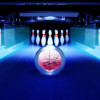Tech could finally help self-driving cars master snow

The research conducted at the country's National Laboratories is usually highly classified and specifically aimed at solving national security problems. But sometimes you get a swords-into-ploughshares moment. That's the case here, as a startup called WaveSense looks to apply technology originally developed by MIT Lincoln Laboratory to detect buried mines and improvised explosive devices for use in self-driving cars.
If you want a car to drive itself, it has to know where it is in the world to a pretty high degree of accuracy. Until now, just about every variation of autonomous vehicle we've come across has done that through a combination of highly accurate GPS, an HD map, and some kind of sensor to detect the environment around it. Actually, you want more than one kind of sensor, because redundancy is going to be critical if humans are going to trust their lives to robot vehicles.
Most often, those sensors are a mix of optical cameras and lidar, both of which have pluses and minuses. But is a combination of lidar and camera truly redundant, if both are relying on reflected light? Other solutions have included far infrared, which works by detecting emitted light, but WaveSense's approach is truly photon-independent. What's more, it's the first sensor we've come across that should be almost completely unfazed by snow.









































































